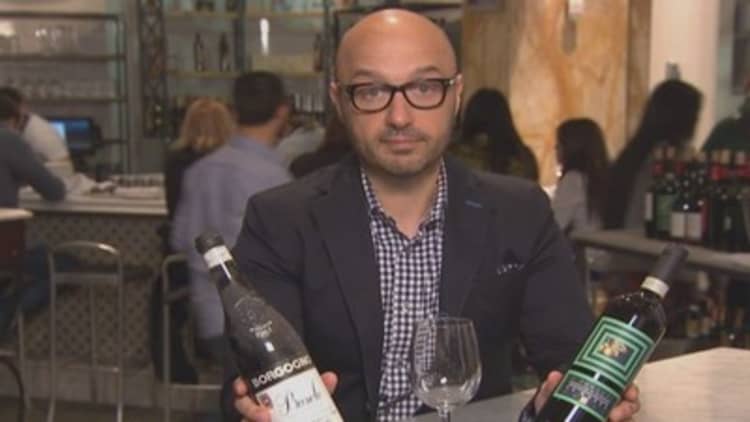
Mother Nature plays an important—and even expensive—role in the making of wine, but Napa Valley lovers need not worry, the recent earthquake isn't likely to drive up prices.
"It's too early to tell, but I don't think enough wine will be taken out of inventory to cause any price concerns," said Patsy McGaughy, the communications director for Napa Valley Vintners.
Still, Sunday's 6.0 magnitude quake caused damages that could hit $1 billion in Northern California, the U.S. Geological Survey estimates.
Any impact to wine will be felt by individual wineries that lost barrels or bottles already on shelves, or to equipment, she said. Overall wine costs should remain steady as the market already has an abundant supply of Napa Valley wines from 2012 and 2013.
The world-renowned region might escape disaster this time, but Napa's wine industry wasn't so lucky in 2011. Continued rainfall damaged crops, causing a low-yielding harvest.
"Wine is an agricultural product. It's made once a year, and it's really dependent on the environment and the growing season of that year," according to Joe Bastianich.
Bastianich is a James Beard award-winning wine and spirits professional and an investor on CNBC's "Restaurant Startup." He says Mother Nature, along with land costs, scarcity, production time and even wood can drive up wine prices.
The Wine Experience: Scarcity and cost
The value of the land where the grapes are grown can greatly affect a bottle's price; the most desired areas can run a million dollars or more per acre.
"A hectare, which is 2.4 acres of premier Burgundy vineyards, can cost upwards of several million dollars," Bastianich said. An acre in Napa Valley can go for $300,000.
The cost of grapes matter, too. California produces 90 percent of the wine made in the United States. In the coveted Napa Valley, a ton of grapes average $3,500, McGaughy said.
Read MoreDecoding wine: How to read a label like a pro
More than four times the price of an average ton of grapes from California's Central Valley, which average $750 per ton. There, growers are more focused on quantity of grapes versus quality of them, explained McGaughy. It's also the home of the ever-popular Two-Buck Chuck, perennially cheap wine made by Charles Shaw.
"In the world of fine and rare wines, the real law is that a wine is worth what someone's willing to pay for it," Bastianich said.
Global supply and demand are the strongest drivers in determining the price of a rare or high-end bottle.
Read MoreUnusual American restaurants
That's unlike everyday wines, where the price-point is affected by the commercial value of the wine and what a consumer will bear. Two completely different pricing concepts, he said.
Bastianich says he drinks from $20 bottles of wine and up, depending on the occasion. One of his most extreme examples of consumption came while making a cross-country plane trip.
"A friend of mine had acquired two bottles of the 1959 Cristal rosé, that was made exclusively for the Shah of Iran," he said.
That friend paid $100,000 perbottle, Bastianich said. "Needless, the Champagne cost more than the flight."
The cost of craftsmanship
Wines produced in highly sought regions of the world are often harvested by hand, while the vineyards in areas where cheaper wines are produced use mechanized farming. That's a big factor in cost.
"It's like the cost of a designer dress or suit versus one that you buy off the rack," McGaughy said. "The people that make that dress are craftsmen, and the brand equity that the particular designer has is much the same in wine, which also has a perceived value and quality based on its origin."
The cost of time and wood
Not all wines are designed to age, but the ones that do can get pricey—requiring more investment and more money to house and store. It all adds up to higher price tags.
For example, a high-quality red wine from Napa Valley takes a minimum of six years from planting the vine before it hits store shelves. A bottle of Italy's Barolo costs about $40 on the low end and requires three to four years of aging before it can be released but can age much longer.
Read MoreHot trends in the restaurant world
"Barolo can age up to 30, 40, even 50 years. And there are great Burgundies that still exist that are 70 to 80 years old," he said. "So you have all that capital resting in the cellar, until it can hit the market."
And if a wine is aged in wood barrels, that cost rises even higher. A typical 240-liter barrel can cost $1,000 to $1,200 or more, he said.
"Restaurant Startup" is on a quest to discover, invest in and launch America's next generation of epicurean superstars. Tuesdays at 10 pm ET/PT.
—By CNBC's Jeanine Ibrahim


